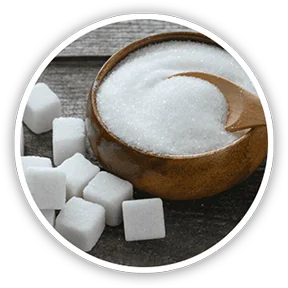The Ultimate Guide to the Keto Diet
As an Amazon Associate I earn from qualifying purchases.
In this article, you will learn all about the Keto Diet and how it can help you achieve your weight loss goals. The Keto Diet is a low-carb, high-fat diet that has become increasingly popular in recent years. By following this diet, you will enter a state of ketosis, where your body uses fat instead of carbohydrates as its primary source of energy. This article will provide you with a comprehensive guide to the Keto Diet, including its benefits, potential risks, and tips for getting started.
First, let’s discuss the benefits of the Keto Diet. Not only can it help you shed pounds, but it can also improve your overall health. The Keto Diet has been shown to reduce blood sugar levels, decrease appetite, and increase mental focus. Additionally, it may have benefits for those with conditions such as epilepsy, PCOS, and type 2 diabetes. However, it is important to note that the Keto Diet is not for everyone, and there are potential risks involved. It is crucial to speak with a healthcare professional before starting any new diet or exercise plan.
This image is property of images.unsplash.com.
The Ultimate Guide to the Keto Diet
Are you looking to lose weight, improve mental clarity, or increase your energy levels? Then the Keto Diet might be just what you need. In this article, we will provide you with the ultimate guide to the Keto Diet, discussing its definition, origin, how it works, the benefits it offers, the foods to eat and avoid, tips for starting the diet, common mistakes to avoid, side effects to be aware of, how to monitor and track progress, exercise recommendations, and finally, our conclusion.
What is the Keto Diet?
Definition of the Keto Diet
The Keto Diet, short for ketogenic diet, is a low-carb, high-fat diet that has been proven to help individuals achieve weight loss and various health benefits. The main principle behind the Keto Diet is to drastically reduce carbohydrate intake and replace it with fat. This puts the body into a metabolic state called ketosis, where it becomes more efficient in burning fat for energy.
Origin of the Keto Diet
The Keto Diet was originally developed in the 1920s as a treatment for epilepsy, particularly in children who did not respond well to medication. It was discovered that by drastically reducing carbohydrates and increasing fat intake, the frequency and severity of seizures could be reduced. As the years went by, the Keto Diet gained popularity beyond epilepsy treatment and has become a popular weight loss and overall health strategy.
How does the Keto Diet work?
When you reduce your carbohydrate intake, your body’s glucose levels decrease. As a result, your body begins to use stored fat as its primary source of energy. This state of ketosis not only helps with weight loss, but also provides a range of other health benefits.
Benefits of the Keto Diet
Weight loss
One of the main reasons people turn to the Keto Diet is for its ability to promote weight loss. When your body is in ketosis, it becomes efficient at burning fat for energy, resulting in gradual and sustainable weight loss.
Improved mental clarity
Many individuals on the Keto Diet report experiencing improved mental clarity and focus. This is due to the stable blood sugar levels that are achieved by reducing carbohydrate intake.
Increased energy levels
By switching your body’s energy source from carbohydrates to fat, you can experience increased energy levels throughout the day. Fat is a more efficient and sustainable source of energy, leading to improved endurance and overall vitality.
Foods to Eat on the Keto Diet
Meat and poultry
When following the Keto Diet, you can enjoy a variety of meat and poultry options. These include beef, chicken, pork, lamb, and turkey. Be sure to opt for unprocessed cuts of meat to avoid added sugars or preservatives.
Fish and seafood
Fish and seafood are excellent sources of protein and healthy fats. Salmon, trout, mackerel, and shellfish are all great choices that can be included in your Keto Diet.
Low-carb vegetables
While the Keto Diet restricts high-carb vegetables like potatoes and corn, you can still enjoy a wide range of low-carb vegetables. Leafy greens like spinach and kale, as well as cruciferous vegetables such as broccoli and cauliflower, make great choices for a Keto-friendly meal.
This image is property of images.unsplash.com.
Foods to Avoid on the Keto Diet
Grains and starches
High-carb grains and starches should be avoided on the Keto Diet. This includes wheat, rice, pasta, bread, and other similar products. Instead, opt for low-carb alternatives like cauliflower rice or zucchini noodles.
Sugar and sugary foods
Sugar is a big no-no on the Keto Diet. This includes both natural sugars found in fruits and added sugars found in processed foods. Be sure to read labels carefully and avoid sugary foods like candy, soda, and desserts.
Processed snacks
Processed snacks like chips, crackers, and cookies are typically high in carbohydrates and should be avoided on the Keto Diet. Instead, opt for healthier alternatives such as nuts, seeds, or homemade Keto-friendly snacks.
Tips for Starting the Keto Diet
Calculate your macro ratios
Before starting the Keto Diet, it is important to calculate your macronutrient ratios. This will help you determine the appropriate amount of fat, protein, and carbohydrates to consume daily. Online calculators and nutrition apps can assist you in this process.
Gradually reduce carbohydrates
Instead of completely cutting out carbohydrates from your diet, it is recommended to gradually reduce your intake. This allows your body to adjust more easily and reduces the likelihood of experiencing side effects.
Stay hydrated
Drinking plenty of water is crucial on the Keto Diet. Not only does it help with digestion and detoxification, but it also helps prevent dehydration, a common side effect of the diet. Aim to drink at least 8 glasses of water per day.
This image is property of images.unsplash.com.
Common Mistakes to Avoid on the Keto Diet
Not consuming enough fats
One common mistake people make on the Keto Diet is not consuming enough fats. Remember, the main source of energy on this diet should come from healthy fats. Avocados, nuts, seeds, and fatty cuts of meat are all excellent sources to include in your meals.
Not monitoring electrolyte levels
When transitioning to the Keto Diet, electrolyte imbalances can occur. It is important to monitor your electrolyte levels, especially sodium, magnesium, and potassium, and replenish them through food or supplements if necessary.
Ignoring nutritional deficiencies
Following a restrictive diet may increase the risk of certain nutritional deficiencies. It is important to ensure you are getting a wide variety of nutrient-dense foods to meet your body’s needs. Consulting with a healthcare professional or registered dietitian can help you avoid and address any potential deficiencies.
Side Effects of the Keto Diet
Keto flu
When transitioning to the Keto Diet, some people experience what is commonly known as the “keto flu.” This includes symptoms such as fatigue, headache, nausea, and irritability. These symptoms are temporary and usually subside within a few days to a week.
Digestive issues
Due to the significant increase in fat consumption, some individuals may experience digestive issues such as constipation or diarrhea. Increasing your fiber intake, staying hydrated, and ensuring adequate intake of healthy fats can help alleviate these symptoms.
Changes in sleep patterns
Some individuals may notice changes in their sleep patterns while on the Keto Diet. This can include difficulty falling asleep or experiencing more vivid dreams. These changes are typically temporary and tend to resolve as the body adapts to the diet.
Monitoring and Tracking Progress on the Keto Diet
Tracking macronutrient intake
To ensure you are staying within your target macronutrient ratios, tracking your intake through food diaries or nutrition apps can be helpful. This allows you to fine-tune your diet and make adjustments as needed.
Monitoring ketone levels
Ketone levels can be monitored through urine testing, blood testing, or breath testing. This provides insight into whether you are in ketosis and can help you assess the effectiveness of your diet.
Tracking weight loss and other health markers
It is important to monitor your progress on the Keto Diet by tracking weight loss and other health markers. This can include measuring body composition, taking regular measurements, and assessing changes in energy levels and overall well-being.
Exercise Recommendations on the Keto Diet
Incorporating low-intensity activities
While on the Keto Diet, it is recommended to incorporate low-intensity activities such as walking, yoga, or light cycling. These exercises help promote fat burning without putting excessive stress on the body.
Including strength training
Strength training is essential for preserving muscle mass while on the Keto Diet. It helps improve body composition, increase metabolism, and boost overall strength and endurance.
Listening to your body’s energy levels
One of the keys to successful exercise on the Keto Diet is listening to your body’s energy levels. If you feel fatigued or low on energy, it may be a sign to reduce intensity or take a rest day. Remember, everyone’s energy needs and responses to exercise can vary.
Conclusion
The Keto Diet can be a powerful tool for weight loss, improved mental clarity, and increased energy levels. By following the principles of the Keto Diet, including reducing carbohydrate intake and increasing fat consumption, you can harness the benefits it offers. Remember to choose high-quality foods, monitor your nutrient intake, and listen to your body’s needs. Consult with a healthcare professional or registered dietitian to ensure the Keto Diet is appropriate for your personal health needs and goals. Start your journey to a healthier you with the Keto Diet today.
Amazon and the Amazon logo are trademarks of Amazon.com, Inc, or its affiliates.









